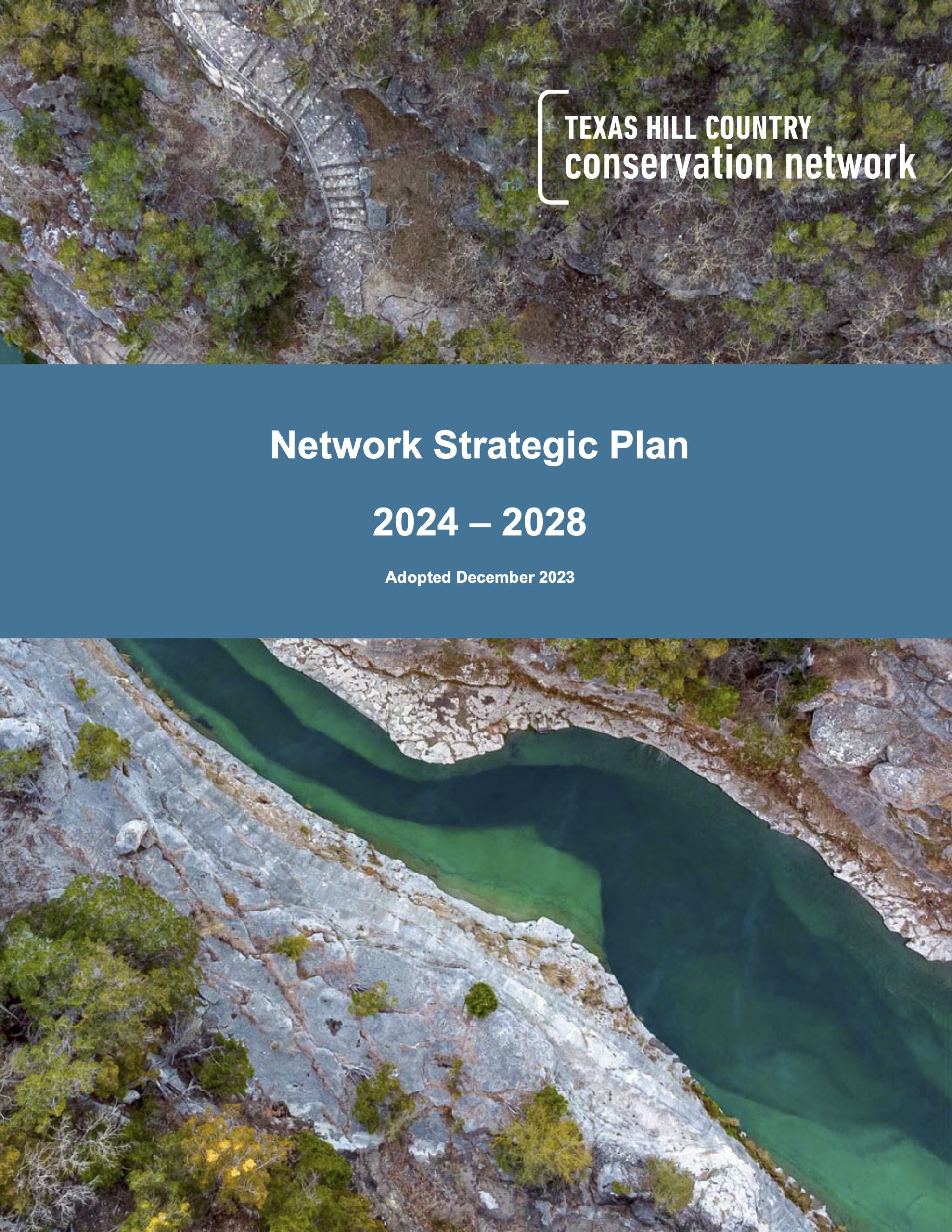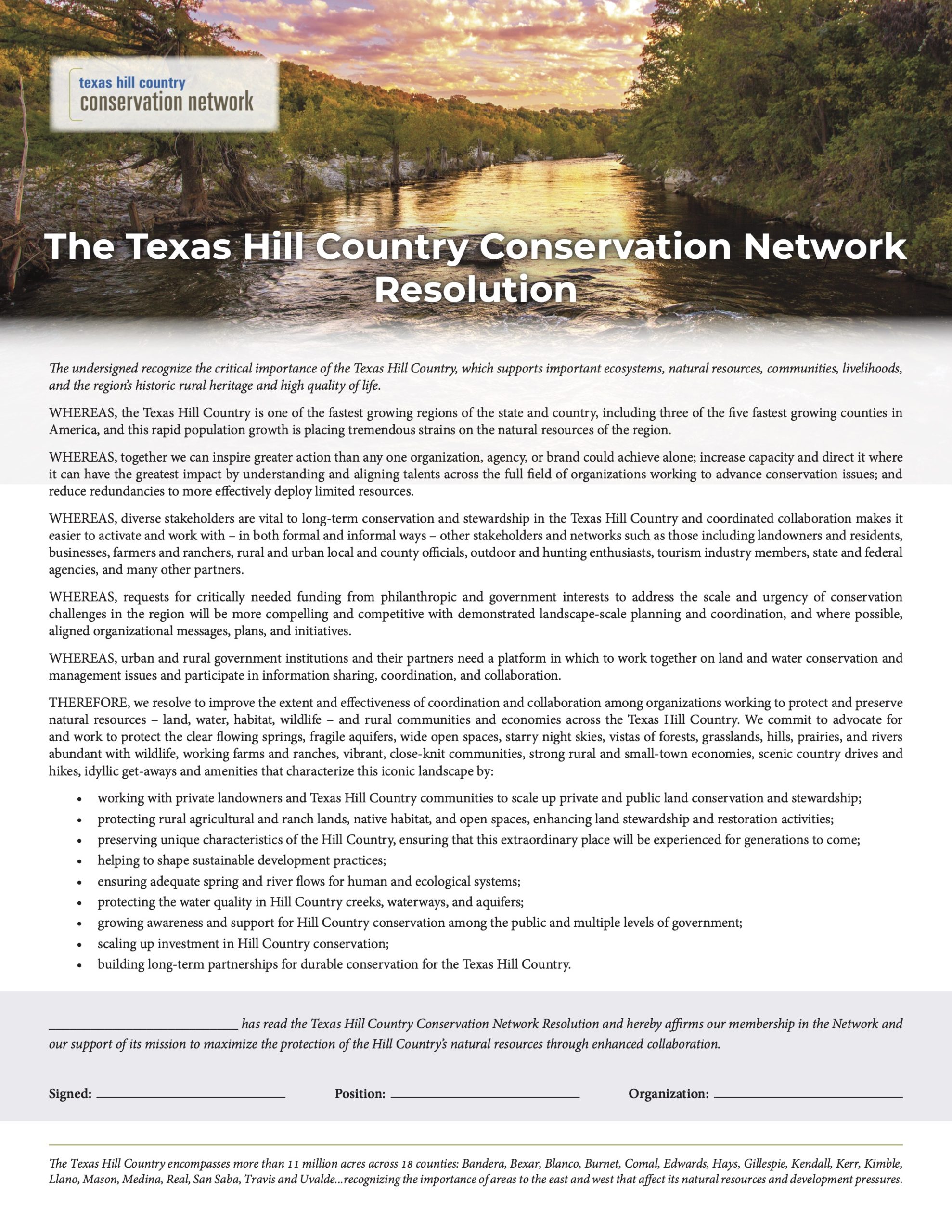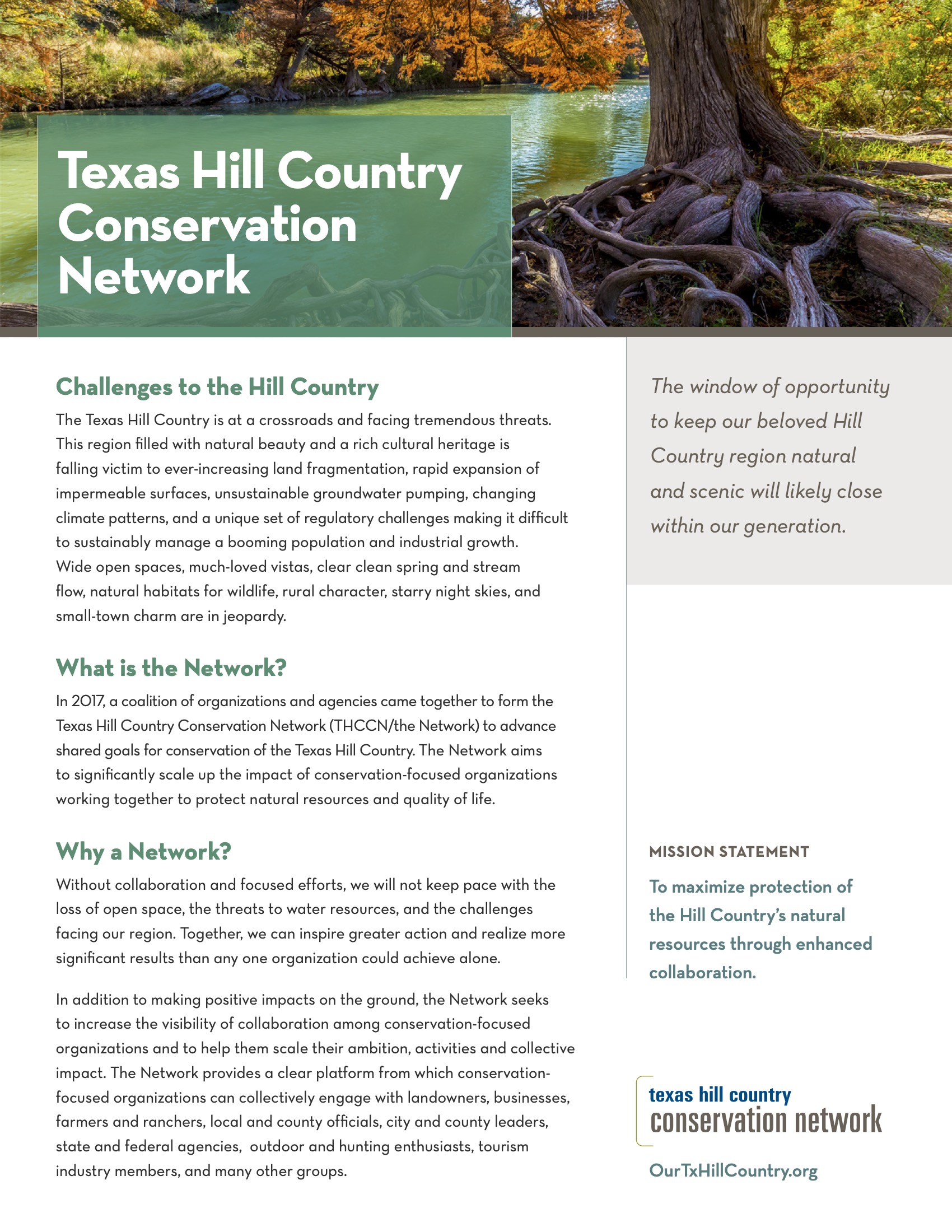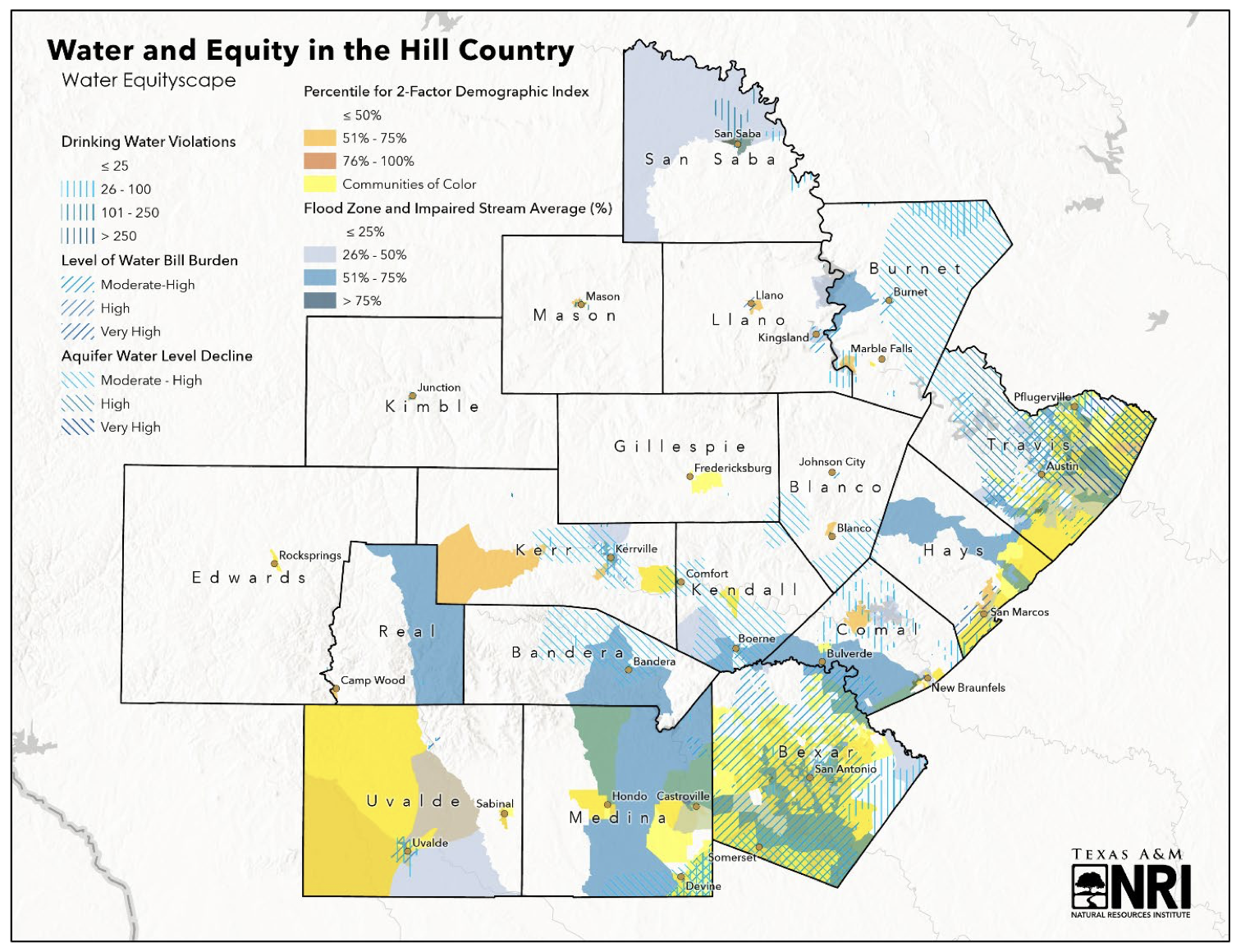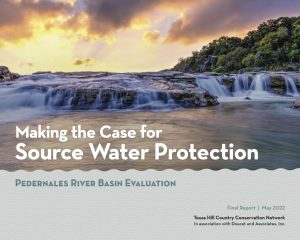Texas Hill Country Conservation Network
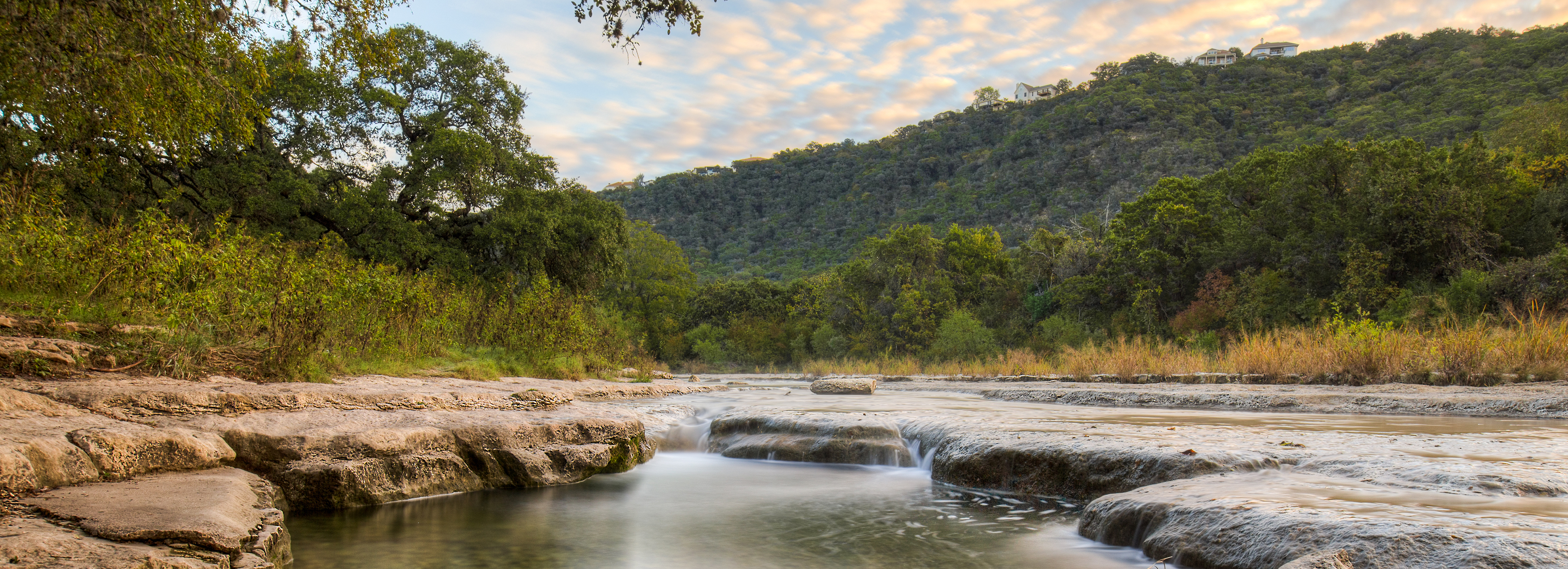
A Collective Impact Approach to Conservation
The Texas Hill Country is at a crossroads. This iconic region, home to the headwaters of 12 of Texas’ rivers, sustains life from the rural backroads of the Texas hinterlands through the rapidly growing cities of the I-35 corridor, to the bays and estuaries of the Gulf of Mexico. Sprawling development, climate change, and booming population growth threaten the complete depletion and degradation of these critical resources.
The Texas Hill Country Conservation Network (the Network) was created as a direct response to these threats, with a mission to significantly scale up the impact of conservation-focused organizations working throughout the Hill Country.
Specific goals of the Network include:
- Permanently protecting 100,000 acres of open space
- Passing strategic county and city bonds totaling $400M for land conservation
- Developing a Hill Country-wide watershed conservation plan
- Securing investments in green infrastructure in all 18 Hill Country counties
Network Strategic Plan: 2024-2028
The Network aims to maximize protection of the Hill Country’s natural resources through enhanced collaboration. This second iteration of the Network’s Strategic Plan presents a united vision for the Hill Country, outlines the challenges the Network seeks to address, and clarifies the current design and structure of our collaboration.
This Strategic Plan outlines our intentions as we seek to improve coordination, align our activities and messaging, and ultimately, increase the impact of our collective work.
Partners Working for the Hill Country
Dozens of non-government organizations, businesses, universities, and governmental organizations have come together to form the Network and collaborate to promote land conservation and stewardship, water quality protection, water conservation, and advancing diversity, equity, inclusion, and justice in regional conservation. The Hill Country Alliance serves as the backbone organization and is the fiscal sponsor for the Network.
Interested in learning more and joining our collaborative efforts? Reach out to Josh Sendejar, Texas Hill Country Conservation Network Manager, at josh@hillcountryalliance.org.
Note: Asterisk (*) designates a formal network partner that has affirmed their membership in the Network by signing on to the Resolution.
- Alamo Resource Conservation and Development Area, Inc
- Austin Water*
- Austin Outside*
- Bexar Audubon Society*
- Blanco Country Conservation Initiative*
- Cibolo Center for Conservation*
- Cibolo Conservancy
- City of Austin Watershed Protection Department
- City of Austin Wildlands Division*
- Colorado River Land Trust
- Comal County Conservation Alliance*
- Defenders of Wildlife*
- Devils River Conservancy
- Edwards Aquifer Authority
- Environment Texas*
- Environmental Defense Fund*
- Go! Austin / Vamos! Austin
- Greater Edwards Aquifer Alliance*
- Green Spaces Alliance of South Texas*
- Great Springs Project*
- Guadalupe Blanco River Trust*
- Hays Trinity Groundwater Conservation District
- Headwaters at the Comal*
- Hill Country Alliance*
- Hill Country Conservancy*
- Hill Country Land Trust*
- Indigenous Cultures Institute*
- LVBrown Studio, LLC*
- Llano River Watershed Alliance
- The Meadows Center for Water and the Environment at Texas State University*
- The Nature Conservancy of Texas*
- Native Plant Society of Texas (Fredericksburg Chapter) *
- National Center for Appropriate Technology*
- National Wildlife Federation*
- Nueces River Authority
- People Organized in Defense of Earth and Her Resources*
- Planet Texas 2050
- San Marcos Greenbelt Alliance*
- San Marcos River Foundation*
- Save Barton Creek Association*
- Save Our Springs Alliance*
- Selah Bamberger Ranch Preserve*
- Shield Ranch
- Texas A&M Natural Resources Institute*
- Texas Agricultural Land Trust
- Texas Audubon Society
- Texas Foundation for Conservation*
- Texas Land Conservancy*
- Texas Land Trust Council*
- Texas Living Waters Project*
- Texas Parks and Wildlife Department*
- Texas Water Trade*
- Texas Wildlife Association
- Travis Audubon Society*
- Trinity Edwards Springs Protection Association*
- University of Texas at El Paso Center for Community Engagement
- The Watershed Association*
- Westcave Outdoor Discovery Center
The Network is governed by a volunteer Steering Committee with members collectively bringing a wealth of experience and expertise in land and water conservation to the Network’s collaborative efforts. The Hill Country Alliance serves as the backbone organization and fiscal sponsor for the Network.
- Katherine Romans, Executive Director | Hill Country Alliance
- Jennifer Walker, Director, Texas Coast and Water Program at National Wildlife Federation | Texas Living Waters Project
- Rachael Lindsey, Director of Science and Stewardship | Hill Country Conservancy
- Carrie Thompson, Director of Operations | The Meadows Center for Water and the Environment
- Ben Eldredge, Executive Director | Cibolo Conservancy
- Azalia Rodríguez, Texas Representative | Defenders of Wildlife
- April Sansom, Executive Director | Selah Bamberger Ranch
- Suzanne Scott, State Director, Texas Chapter | The Nature Conservancy
- Soll Sussman, Board Member | DarkSky Texas
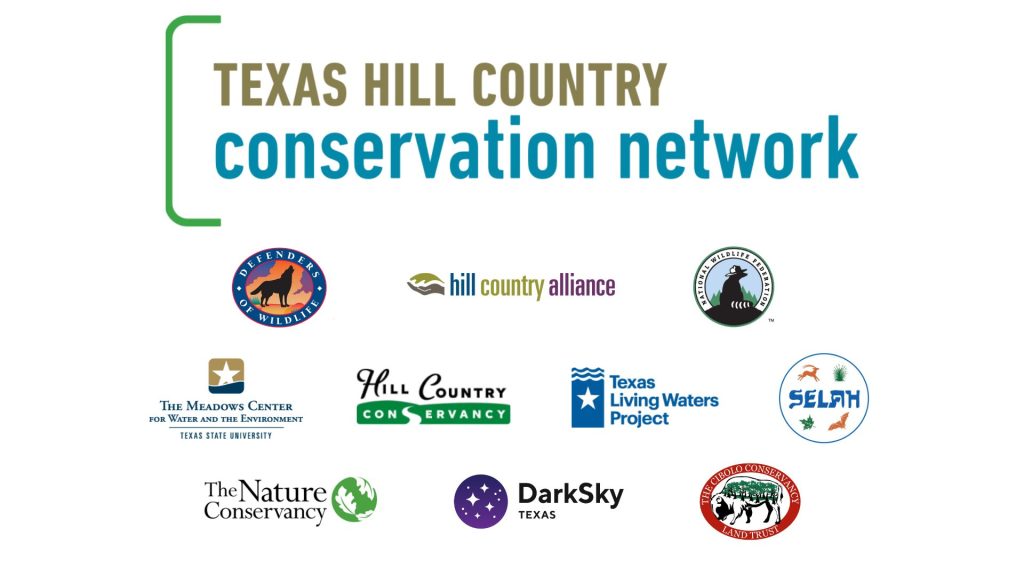
Initiatives, Projects, and Reports
Water and Equity Report
Water and Equity in the Texas Hill Country
The Texas Hill Country Conservation Network (THCCN) coordinates partnerships working to scale up the impact of conservation-focused organizations in the region. In order to achieve their respective missions, the partnership needed an assessment of water challenges and how these challenges impact Hill Country communities, particularly those communities comprised of underserved or at-risk populations. This report provides a baseline, holistic understanding of where diversity, equity and inclusion (DEI) and environmental justice (EJ) issues intersect with water issues and challenges within the Texas Hill Country, and, further, outlines key findings and defines action items moving forward. Click to explore more.
A data mapping tool is also available through the Texas A&M Natural Resources Institute.
Funders of the report include: Environmental Defense Fund, National Wildlife Federation, Texas Water Trade, Wimberley Valley Watershed Association, The Meadows Center for Water & the Environment, and Hill Country Alliance
Report written by, and with in-kind support from, Texas A&M Natural Resources Institute.
Source Water Protection Report
Making the Case for Source Water Protection: Pedernales River Basin Evaluation
This case study presents multiple land conservation and source water protection programs, their successes and funding sources. Ultimately, the study suggests priority protection areas and a road map for implementing a successful source water protection program in the Pedernales River Basin.
State of the Hill Country Report
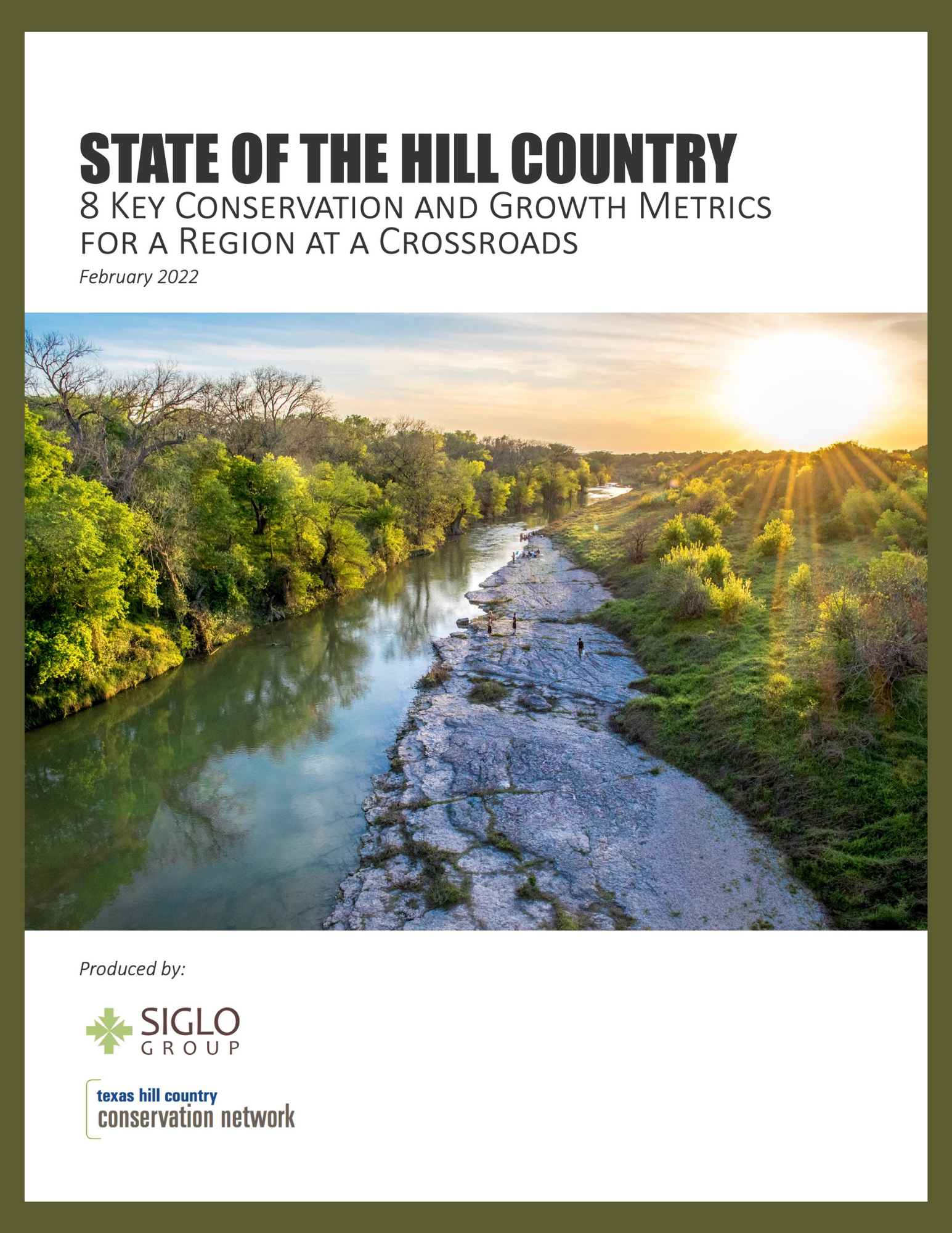 8 Key Conservation and Growth Metrics for a Region at a Crossroads
8 Key Conservation and Growth Metrics for a Region at a Crossroads
This report defines and calculates eight metrics for tracking trends related to changes in the natural resources of the Texas Hill Country. Dozens of organizations — nonprofits, government agencies, academic institutions and aligned private businesses — endeavor to protect the land, water and sky of this unique region. The metrics defined here will support these entities as they work individually and collectively through The Network to both tell the story of the need for conservation and preserve the natural resources and heritage of the Texas Hill Country.
Diversity, Equity, Inclusion and Justice at the Network
Diversity, Equity, Inclusion and Justice at the Network
Like many fields in the United States, environmental conservation has long been interwoven with dynamics of racial oppression and exclusion related to race, class, and gender. The Texas Hill Country has not escaped the effects of this history and these dynamics. The Network understands that to achieve our mission to maximize protection of the Hill Country’s natural resources through enhanced collaboration, we must work to create a culture of inclusion and equality among our members, within our stakeholder communities, and within all our conservation endeavors in order to ensure that our mission equitably serves all within our community. The success of our conservation efforts depends upon our ability to encourage, support, and celebrate the diverse voices of the Texas Hill Country and the regions its natural resources support.
Since 2020, partners within the Network have been focused on questions of how to better incorporate the principles of diversity, equity, and inclusion into our shared work. The Network is currently working on two consultant-led projects, one taking an internal look to see how the Network can be a more diverse, equitable, and inclusive space and the other taking an external look at regional demographics and exploring questions at the intersection of equity and water management and access. Our journey leads onward, and we looking forward to sharing our progress and what we learn with you.
2018 - 2022 Strategic Plan
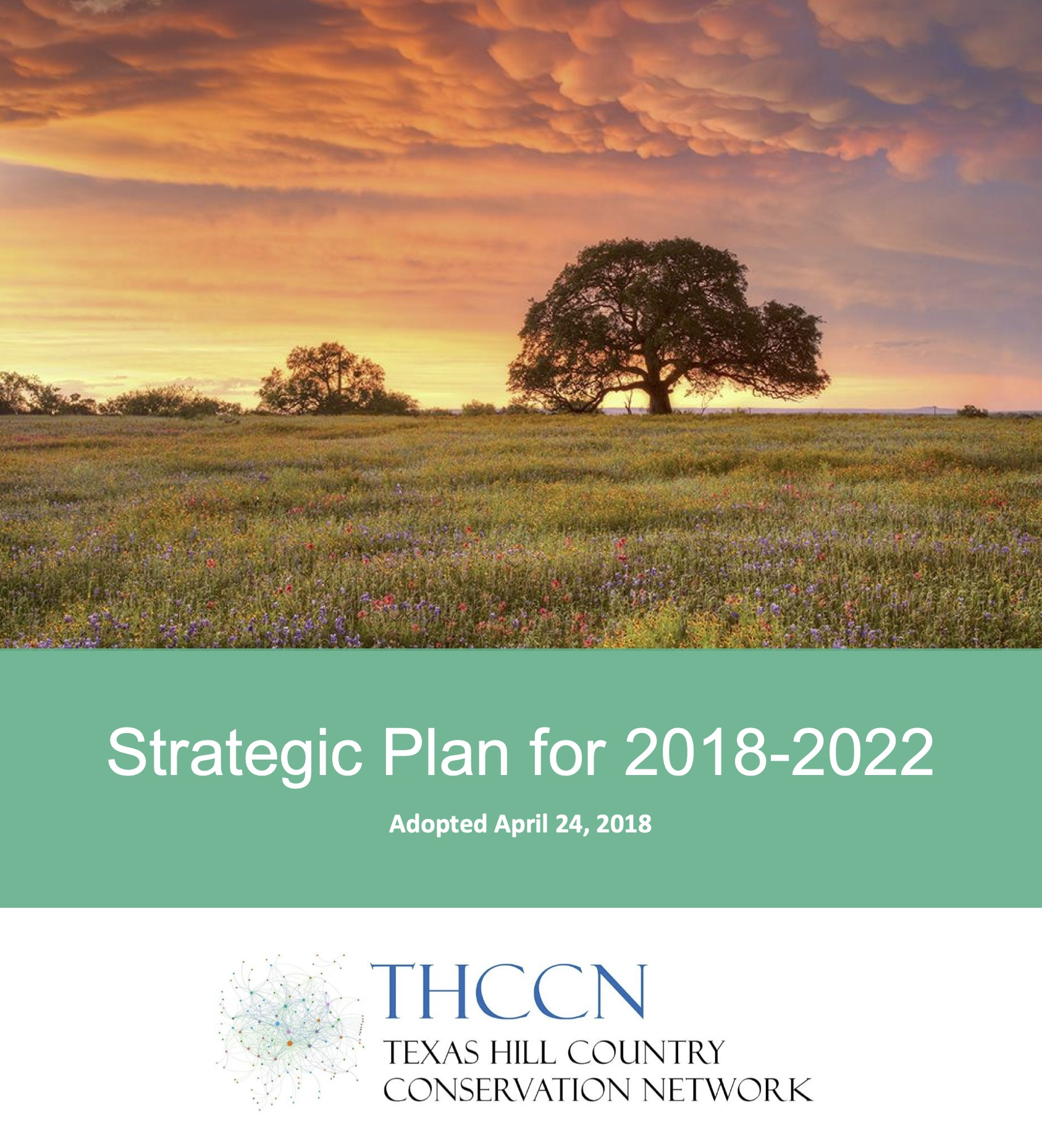 2018-2022 Strategic Plan
2018-2022 Strategic Plan
Started in 2017, this strategic plan was designed to create a comprehensive organizational, membership, and governance structure and protocols for the Network that would increase organizational capacity and effectiveness. This strategic plan document was finalized in January 2018 and includes: identification of the problem the Network seeks to address; a statement of purpose for the Network; mission and vision statements; a description of how Network members will collaborate; six priority goal areas for 2018-2022 and suggested metrics to measure progress; an outline of the Network design and structure; a list of near-term priority activities; and a statement of the Network approach and values.
2016 Report: The Need for a Network Approach
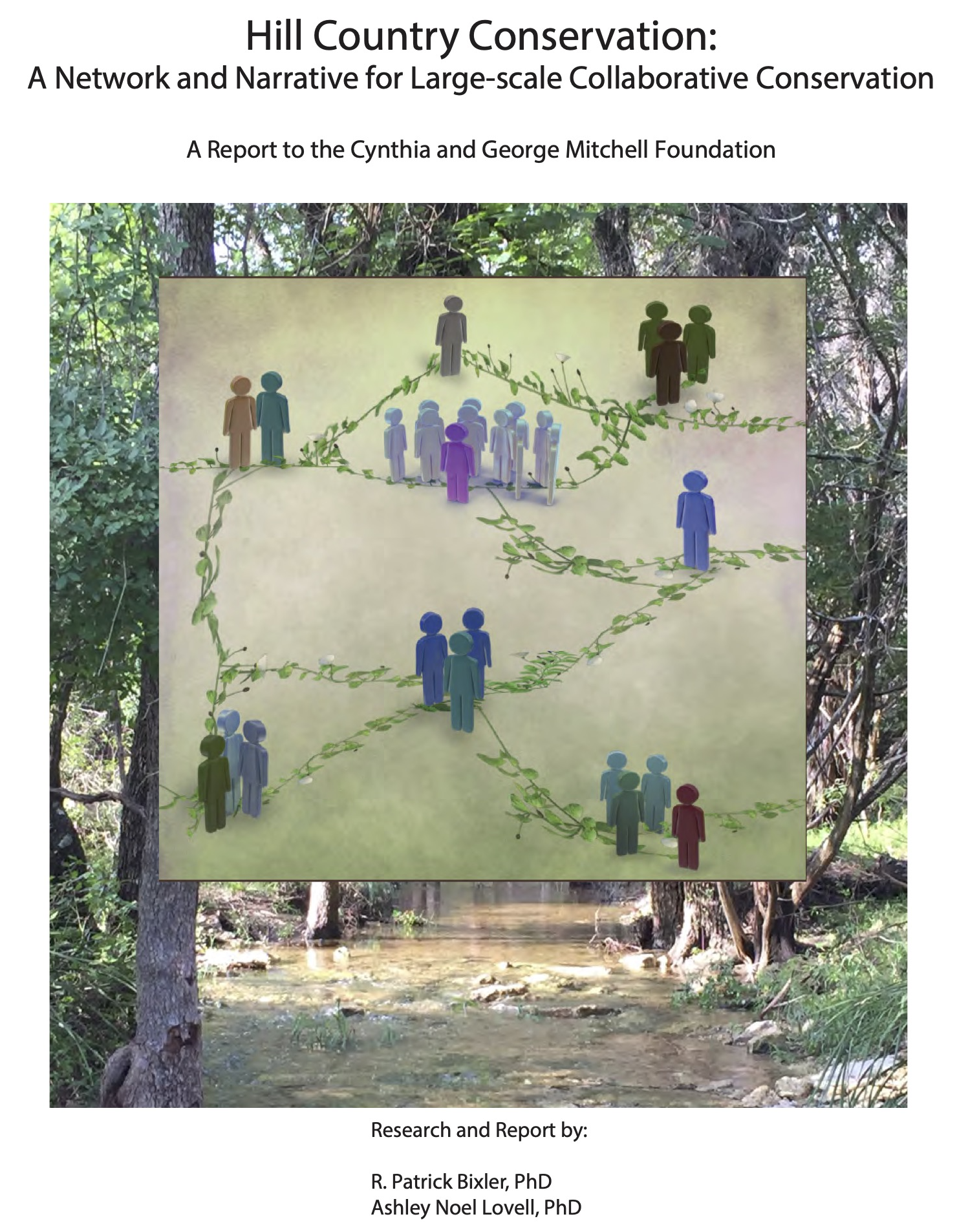 Hill Country Conservation: A Network and Narrative for Large-Scale Collaborative Conservation
Hill Country Conservation: A Network and Narrative for Large-Scale Collaborative Conservation
In 2016, The Network released “Hill Country Conservation: Identifying a Narrative and Network for Large-scale Collaborative Conservation” – a report describing the joint research and practitioner-based effort to understand the network and narrative that shapes Hill Country conservation opportunities and outcomes. From April 2015-July 2016, we collected and analyzed over 40 hours of interview data and developed an extensive database of information in an attempt to better understand the organizations and agencies that work to make the Hill Country a socially and ecologically thriving landscape.
2016 Report: Toward a Regional Plan for the Texas Hill Country
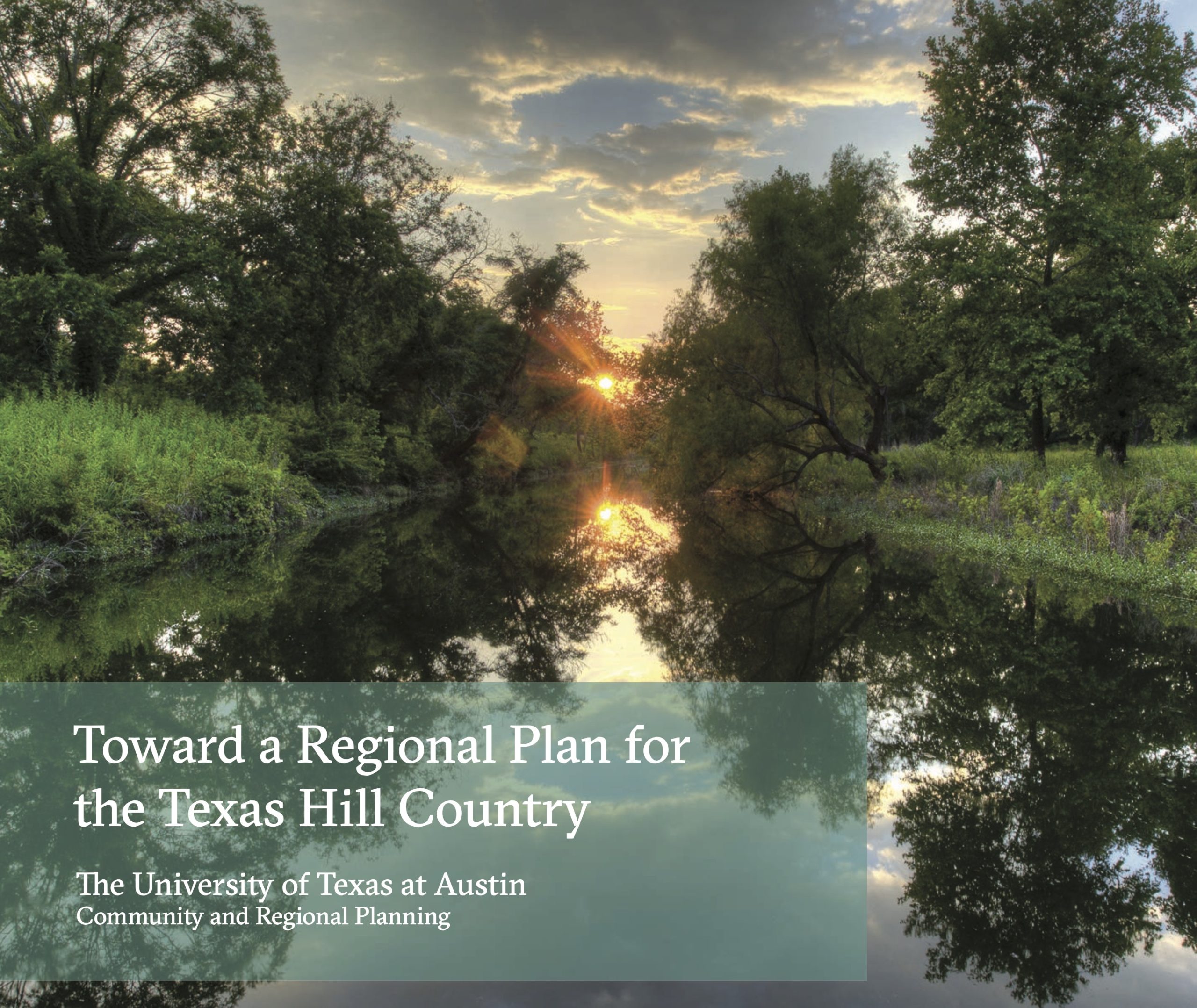 Toward a Regional Plan for the Texas Hill Country
Toward a Regional Plan for the Texas Hill Country
This foundational report summarizes the findings and recommendations of the Hill Country Studio convened by The University of Texas School of Architecture (UTSOA) at the request of the Hill Country Alliance (HCA) in the fall of 2015. HCA is a civic group that seeks to protect and conserve the Texas Hill Country. The Alliance asked the studio to outline strategies that might be used to protect the land and water resources of the Hill Country. This report will provide HCA with a framework for planning and consensus building as they work to protect this special part of Texas.

